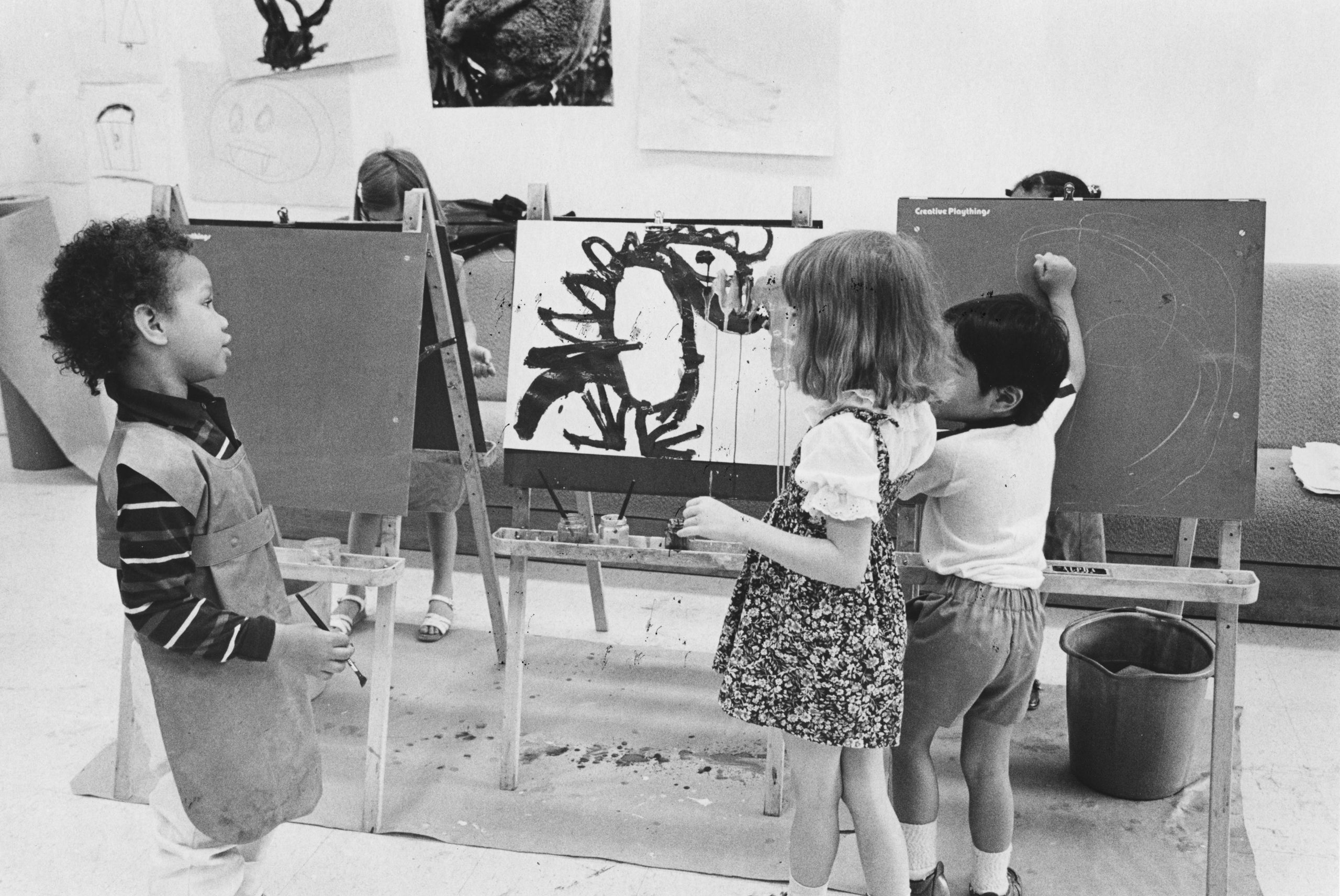From the Archives
Young Artist’s Studios

Children at Young Artist’s Studios, 1975. Image courtesy of Institutional Archives, Ryerson and Burnham Libraries, Art Institute of Chicago
Children at Young Artist’s Studios, 1975. Image courtesy of Institutional Archives, Ryerson and Burnham Libraries, Art Institute of Chicago
by Rowan Beaird
For decades, the School of the Art Institute of Chicago (SAIC) has run innovative, experiential classes for K–12 students from throughout the city.
Back in the 1970s, children and young adults came to the School as part of a series called Young Artist’s Studios (YAS) at the Art Institute of Chicago. These classes were overseen by SAIC’s Department of Art Education, with undergraduate and graduate students coming in on their weekends to co-facilitate and teach children about the power and importance of self-expression. “There was no difference between these classes with kids and what was being taught at the School,” shared Faculty Emeritus Jerry Stefl.
Then, as now, the faculty was passionate about experiential learning. For SAIC’s youngest learners, this meant classes looked a little different than typical elementary school art classes. Stefl, who began teaching at the School in 1970, recalls art history lessons where children learned about ancient Egypt by burying mummies in an SAIC courtyard. “Instructors would have students paint brown craft paper as if they were cave walls while studying the prehistoric period. The faculty would go to resale shops and buy old fur coats to lay on the tables and floors to make everything feel prehistoric,” Stefl shared.
Unlike more traditional art curricula at the time, SAIC classes brought the subject matter to life for their students. They often visited the Art Institute of Chicago museum for inspiration, and some lessons took students outside of the city itself. “We had one class at Pleasant Valley Farms, an hour outside Chicago. Students planted an herb and dye garden, spun wool, dug clay out of the ground,” Stefl said. “Those experiences stayed with them.”
“There was no difference between these classes with kids and what was being taught at the School. Those experiences stayed with them.”
Afterward, the students’ work was often exhibited in the glass display cases running down the 280 Building’s first-floor corridor, mounted at waist-level height so children could see their creations.
The Art Education department also deeply believed in making these classes accessible. A diverse group of children came from all over the city to attend. Faculty understood the importance of building relationships with communities across Chicago and mentored students around teaching in low-income neighborhoods. They also ensured scholarships were offered to remove barriers. The Art Education department was one of the first at the School to champion a socially engaged practice in their curriculum.
Thanks to these faculty members, countless children from across the city found their voice and discovered a love of art at SAIC. ■

